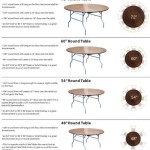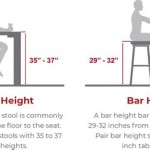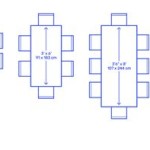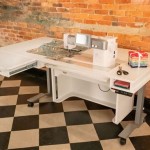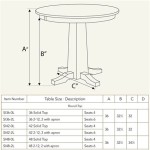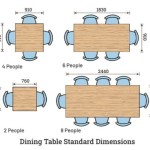Table Top Pool Cue Holder: A Comprehensive Guide
The game of pool, billiards, or snooker – regardless of the specific variation – relies on precision, strategy, and well-maintained equipment. While the cue stick itself receives considerable attention regarding its quality and feel, the method of storing and displaying these valuable tools is often overlooked. Table top pool cue holders provide a practical and aesthetically pleasing solution for managing cues within a limited space, enhancing both the playing environment and the longevity of the cues themselves.
Unlike wall-mounted or floor-standing cue racks, table top holders offer a portable and compact alternative, ideally suited for smaller game rooms, apartments, or situations where permanent fixtures are undesirable. They eliminate the need for drilling into walls and provide flexibility regarding placement within the playing area. This article delves into the various aspects of table top pool cue holders, encompassing their benefits, types, materials, selection criteria, maintenance, and complementary accessories. Understanding these elements will enable informed decisions when choosing the optimal holder for individual needs and preferences.
Benefits of Using a Table Top Pool Cue Holder
The primary advantage of a table top pool cue holder lies in its space-saving design. Traditional cue racks can be bulky and necessitate dedicated wall or floor space, which may be a constraint in smaller rooms. Table top variations, on the other hand, can be conveniently placed on a table, shelf, or any other flat surface within easy reach of players. This portability allows for strategic repositioning, ensuring cues are always readily accessible during gameplay.
Beyond spatial considerations, table top cue holders contribute significantly to the protection of cue sticks. By providing a designated resting place, they prevent cues from being leaned against walls or left lying on tables, both of which can lead to warping, scratches, and other forms of damage. The risk of accidental collisions and subsequent damage is also reduced, extending the lifespan of the investment in the cues.
Furthermore, a thoughtfully chosen table top cue holder enhances the overall aesthetic of the game room. Available in a variety of styles, materials, and finishes, these holders can seamlessly complement the existing décor, adding a touch of sophistication and organization. They transform the storage of cues from a mere necessity into a visual element that contributes to the ambiance of the space.
The convenience of these holders extends to their ease of setup and maintenance. Unlike more complex racking systems, table top holders typically require minimal assembly, if any. Their simple design also facilitates easy cleaning and dusting, ensuring they remain in pristine condition and continue to serve their purpose effectively.
Types and Materials of Table Top Pool Cue Holders
Table top pool cue holders are available in a range of designs, each with its own unique characteristics and advantages. Cradle-style holders feature individual slots or cradles for each cue, providing maximum protection and preventing cues from knocking against each other. These often feature a felt or rubber lining within the cradles to further minimize the risk of scratching or damage.
Ring-style holders, conversely, consist of a series of concentric rings or holes that accommodate the cues. While potentially less protective than cradle-style holders, they often offer a more compact footprint and can be visually appealing. The choice between these two styles often depends on the desired level of protection versus space constraints and aesthetic preferences.
The materials used in the construction of table top cue holders vary widely, influencing both their durability and aesthetic appeal. Wood, particularly hardwoods such as oak, maple, and cherry, is a popular choice due to its natural beauty, strength, and ability to be stained or finished to match existing furniture. Wooden holders often exude a sense of classic elegance and can blend seamlessly into traditional game room settings.
Metal, such as stainless steel or aluminum, offers a more modern and minimalist aesthetic. Metal holders are typically highly durable and resistant to wear and tear. The sleek lines and polished surfaces of metal holders can complement contemporary game room designs. Powder-coated metal options are also available, providing a wider range of color choices and increased resistance to scratches and rust.
Plastic, typically high-density polyethylene (HDPE) or similar durable polymers, provides a lightweight and cost-effective alternative. Plastic holders are often resistant to moisture and easy to clean, making them suitable for environments where spills or humidity may be a concern. While potentially less aesthetically pleasing than wood or metal options, plastic holders can be a practical choice for budget-conscious buyers or those prioritizing functionality over appearance.
Hybrid designs, combining different materials, are also common. For example, a cue holder may feature a wooden base with metal cradles or a metal frame with plastic inserts. These hybrid designs aim to leverage the strengths of different materials, creating a balance between durability, aesthetics, and cost.
Factors to Consider When Choosing a Table Top Pool Cue Holder
Selecting the appropriate table top pool cue holder requires careful consideration of several factors. The number of cues to be stored is a primary determinant. Holders are available in a range of capacities, typically accommodating from two to eight cues. Choosing a holder with sufficient capacity ensures all cues can be stored safely and conveniently.
The size of the available space is another crucial factor. Measure the intended placement area to ensure the chosen holder will fit comfortably without obstructing gameplay or creating a cluttered appearance. Consider both the footprint of the holder and its height, particularly if it will be placed under a shelf or other overhang.
The style and material of the holder should complement the existing décor of the game room. Consider the colors, finishes, and overall aesthetic of the room when making a selection. A cohesive design enhances the visual appeal of the space and creates a more enjoyable playing environment.
The stability of the holder is paramount. Ensure the base is wide and heavy enough to prevent tipping, even when loaded with cues. Look for holders with non-slip feet or pads to further enhance stability and prevent scratching of the table surface. A stable holder minimizes the risk of accidental damage to the cues and ensures they remain securely in place.
The level of protection offered by the holder is another important consideration. Cradle-style holders generally provide superior protection compared to ring-style holders, as they prevent cues from touching each other. Look for holders with felt or rubber linings in the cradles to further minimize the risk of scratches or damage. The construction quality and durability of the materials used also contribute to the overall level of protection.
Finally, consider the ease of use and maintenance. Choose a holder that is easy to load and unload cues from. Ensure the holder is easy to clean and dust, and that the materials used are resistant to staining or other damage. A well-designed and easy-to-maintain holder will provide years of reliable service.
Beyond these fundamental aspects, individual preferences may also play a role in the selection process. Some players may prioritize aesthetic appeal above all else, while others may be more concerned with durability and protection. Ultimately, the best table top pool cue holder is the one that best meets the specific needs and preferences of the individual player.
After purchasing a table top cue holder, proper maintenance ensures its longevity and continued functionality. Regular dusting prevents the buildup of dirt and debris, which can scratch or damage the cues. Wood holders may benefit from occasional polishing to maintain their luster. Metal holders can be cleaned with a mild detergent and water. Plastic holders are typically easy to clean with a damp cloth.
Complementary accessories can further enhance the functionality and aesthetic appeal of a table top cue holder. Cue tip shapers, chalk holders, and cleaning cloths can be stored alongside the cues, providing a convenient and organized solution for maintaining equipment. Decorative items, such as small figurines or trophies, can be placed around the holder to add a personal touch to the game room.

Pool Cue Holder For Table Claw Top Clamp Portable Professional Wooden Durable Weighted 3 Sticks Billiard Com

Pool Cue Holder For Table Claw Top Clamp Portable Professional Wooden Durable Weighted 3 Sticks Billiard Com

Presidential Heavy Duty Straight Floor Cue Accessory Rack Robbies Billiards

Extreme Portable Pool Billiards Cue Stick Table Top Holder 3 Place Black Maine Home Recreation

Portable Pool Cue Holder Stick Stand Table Top Durable Billiard Rack Rest For Game Room Players Bars Clubs 3 Place Black Ca

Portable Anti Slip Rack 2 3 4 5 Pool Cues Holder Stand Table Accessories

Pool Cue Holder For Table Claw Billiard Rest Durable Easy Using Snooker Rod Rack Chair Bar Accessories 5 Holes Com

Table Top Cue Holder

Konllen Pool Stick Cue Holder Portable Claw Rack Holds 4 Cues Against Table Weighted Solid Wood Holes Yahoo Ping

Qk S Portable Cue Holder 3 Cues Thailand Pool Tables

